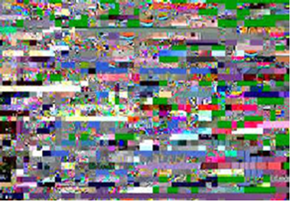You’ve heard the Beatles song, no doubt.
“Here comes the sun, doot-doot-do-doo
Here comes the sun, and I say it’s alright.”
But as much as we generally love the sun, when it comes to TV service, it can cause problems a few times a year—something called sun outages.
What in the heck is a sun outage?
Well, for about two weeks each spring and fall, the sun falls in juuusssttt the right spot in the sky to interfere with TV satellite signals. Specifically, there are times when our favorite glowing orb is in a direct line behind a communication satellite sending signals to a receiving satellite antenna here on earth. When the antenna is looking into the sun, the interference from the sun overrides the signals from the satellite.

At first, the effects of a sun outage are minimal. But they can gradually worsen to the point of total outage. Some channels will experience “macro-blocking” or “tiling” of the picture before and after peak times. These are the channels we receive digitally from the satellite.
Another round of sun outages is on the way February 25 to March 15, 2020
Sun outages typically occur during a period in February or March and September or October and can last as long as 15 minutes a day. The effects of a sun outage vary in degree from minimal to total outage throughout the prime sun outage weeks. Once it reaches its peak, the interference will gradually decrease, becoming less noticeable each day after.
Unfortunately, there is technically nothing we can do to prevent sun outages from occurring. Each satellite service that we receive signals from will experience this interference in the time frame mentioned above.
Updated 2/24/2019. Published Sep 29, 2016


